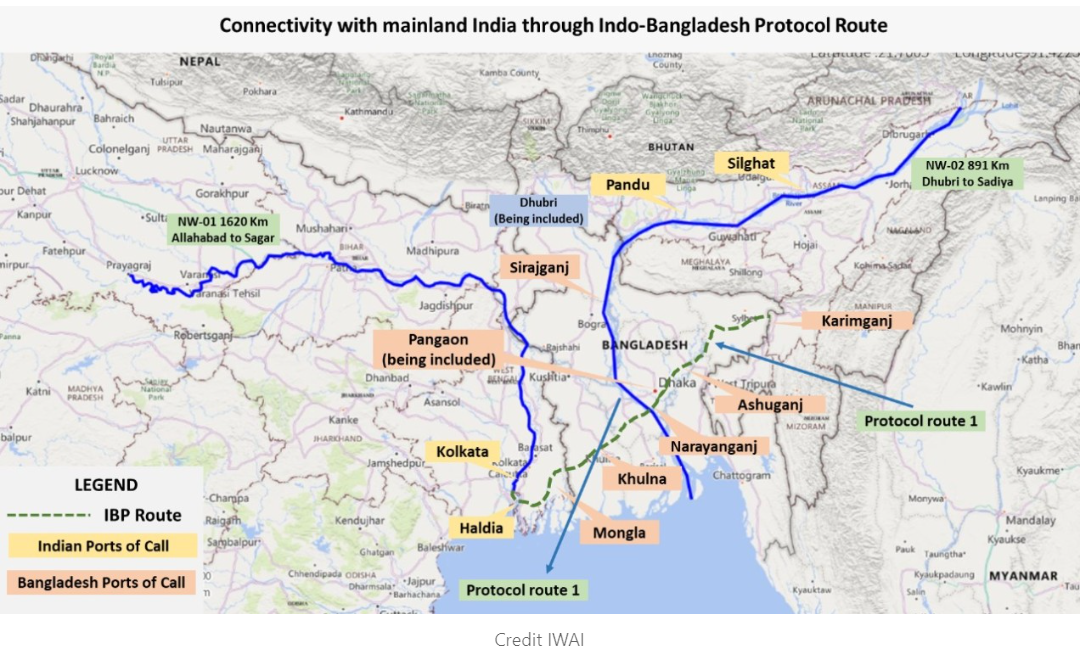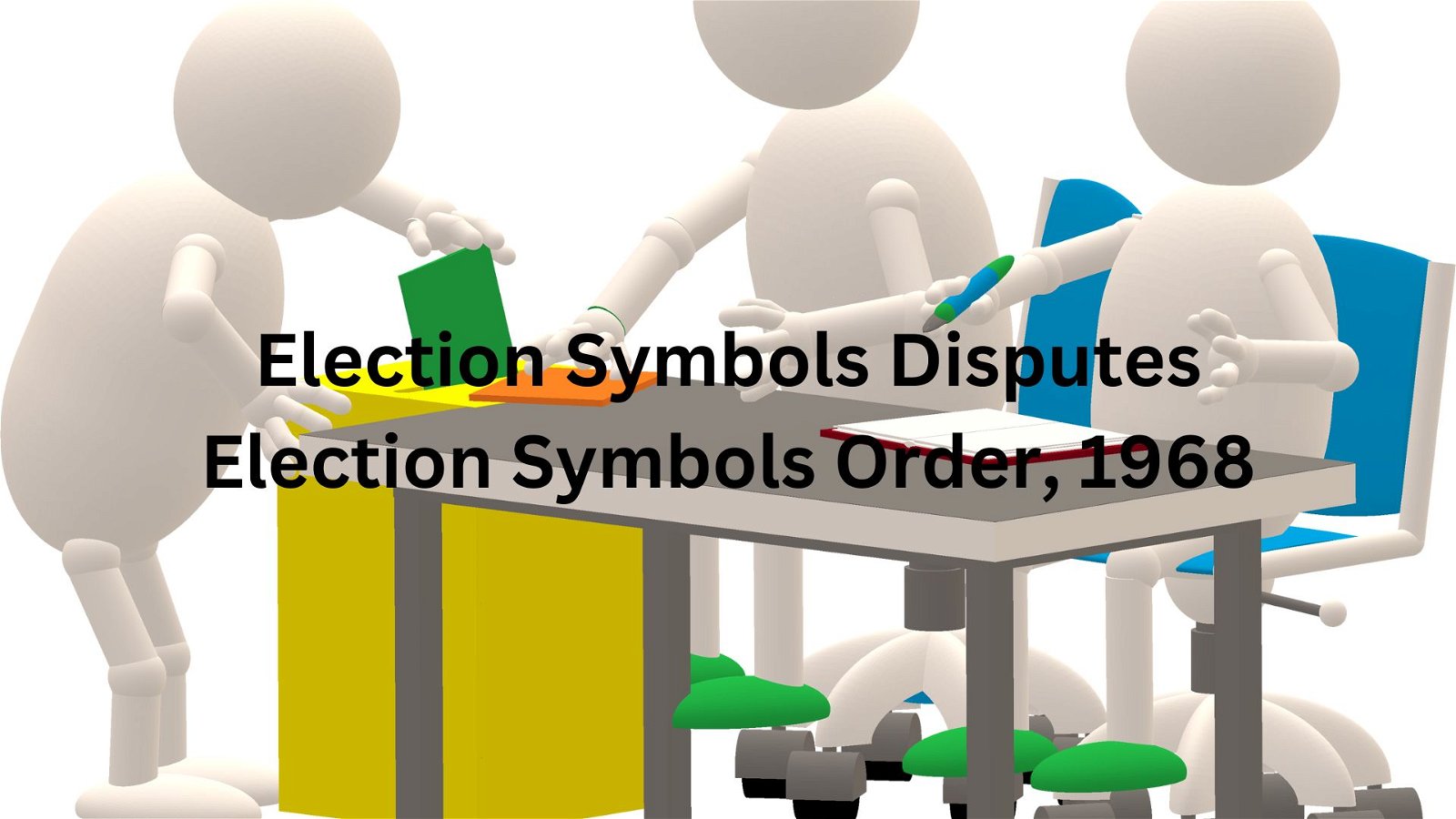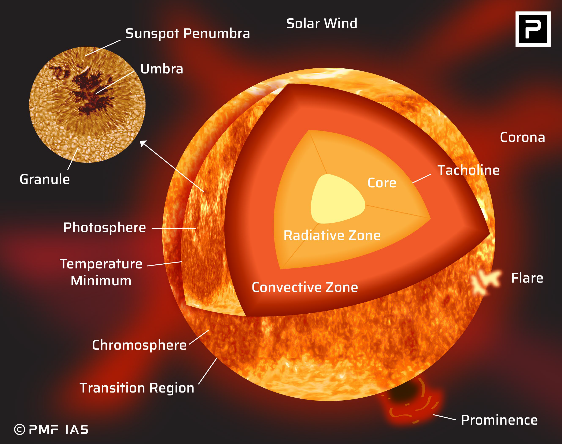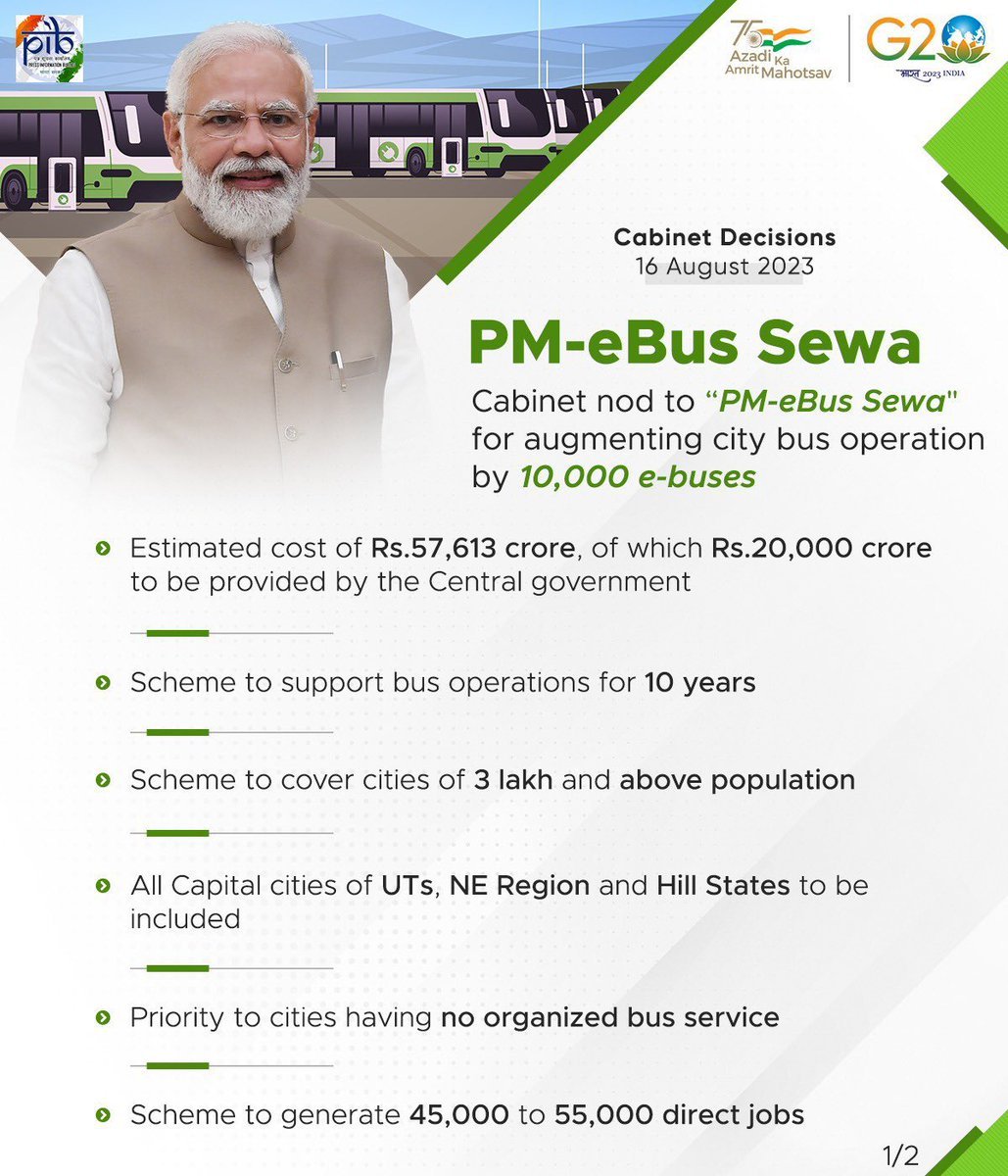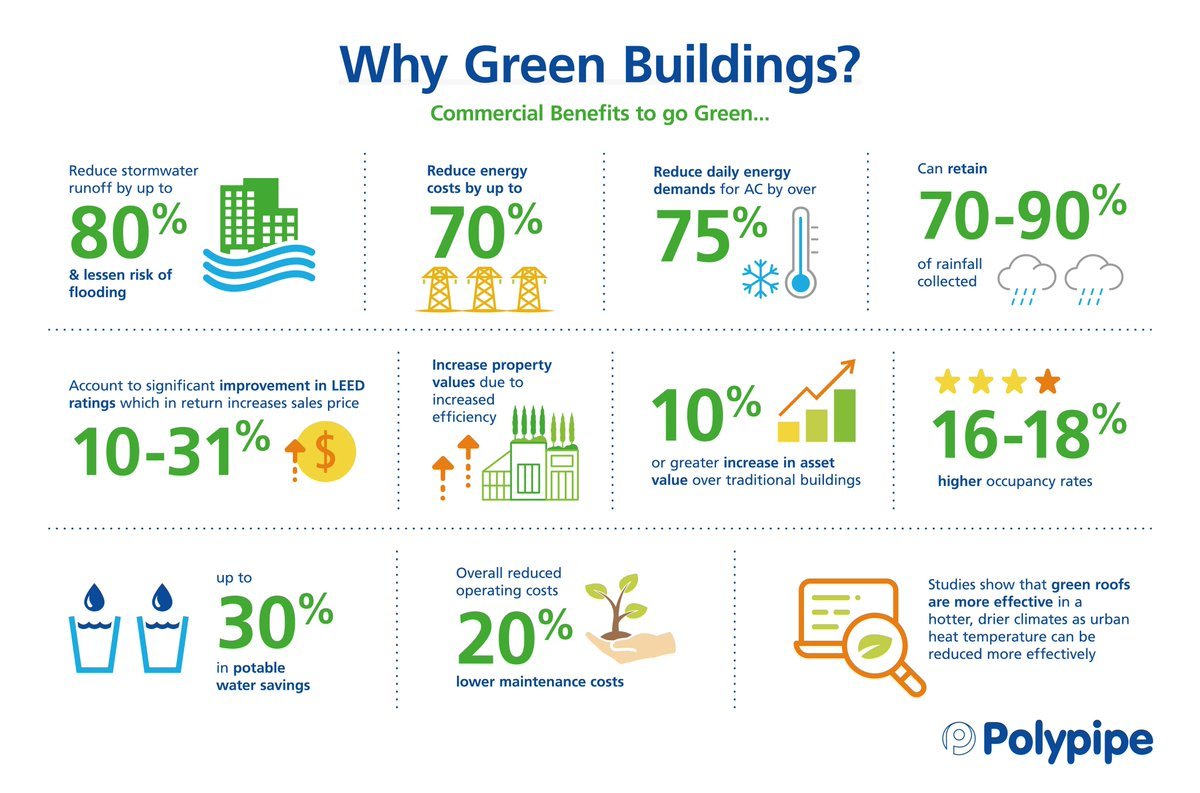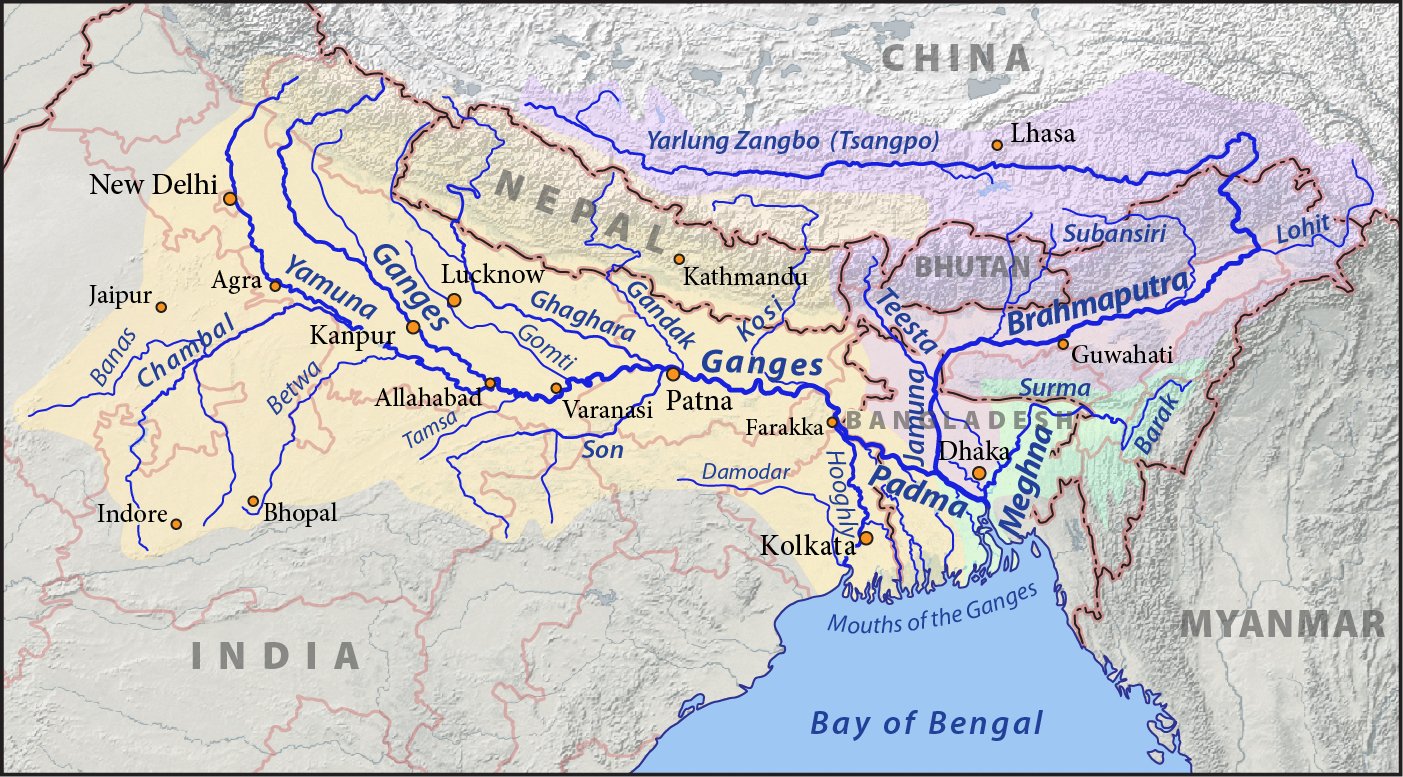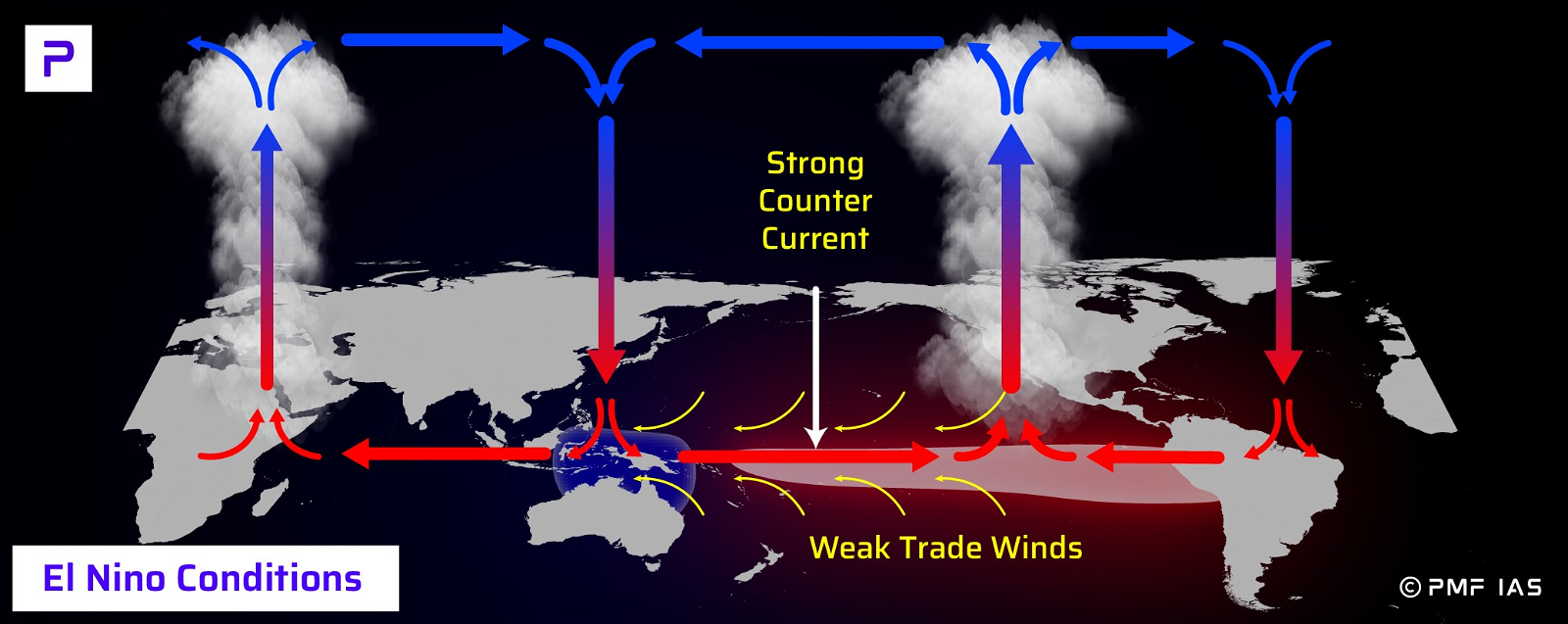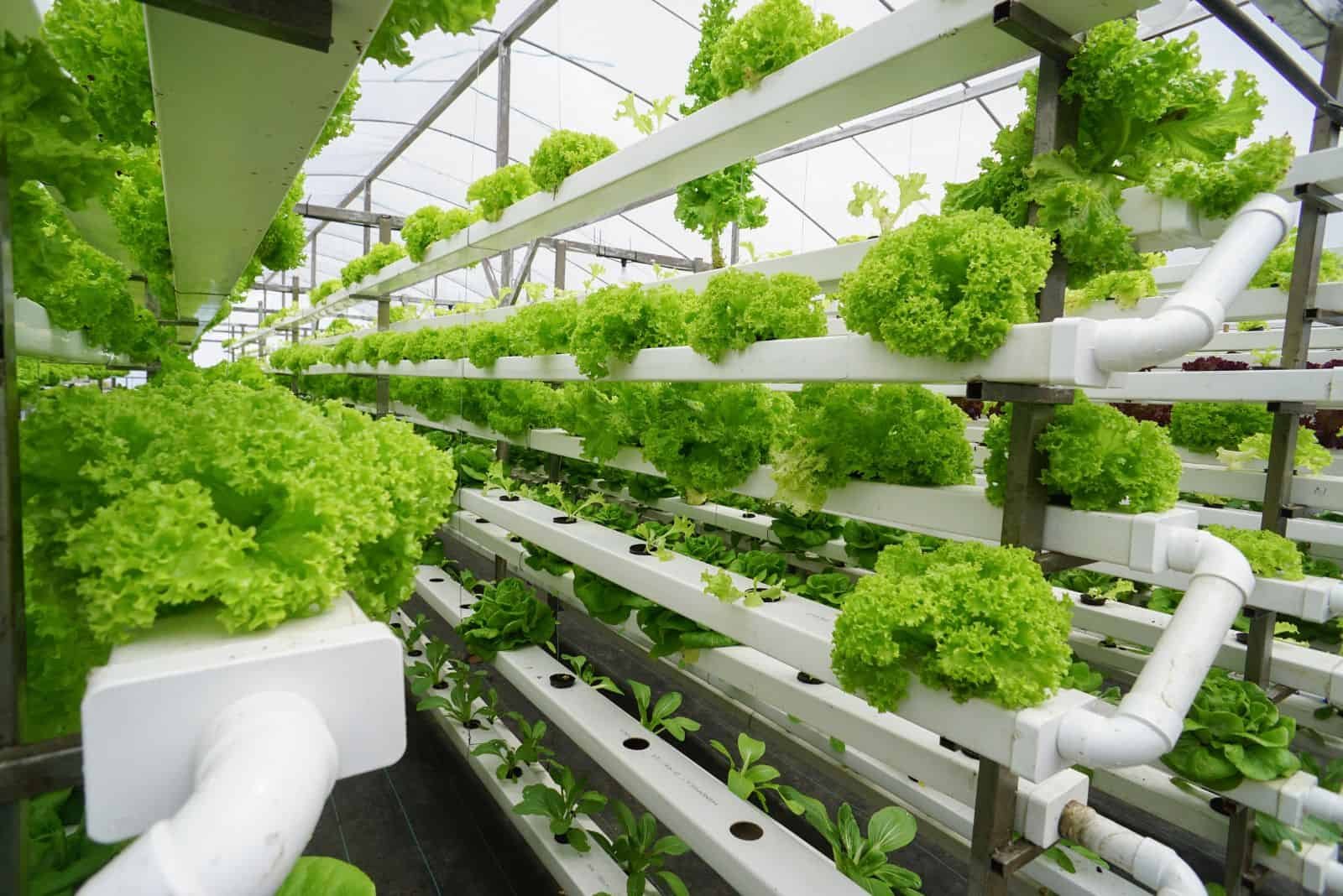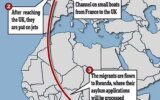
Current Affairs February 11-12, 2024: Swami Dayanand Saraswati, Indo Bangladesh Protocol (IBP) Route, One Nation One Election, India-UAE Relations, High Altitude Pseudo-Satellite, SWATI Portal, Lymphatic Filariasis, Nazool Land
Subscribers of "Current Affairs" course can Download Daily Current Affairs in PDF/DOC
Subscribe to Never Miss an Important Update! Assured Discounts on New Products!
Must Join PMF IAS Telegram Channel & PMF IAS History Telegram Channel
{GS1 – MIH – PIN} Swami Dayanand Saraswati
- Context (TH): PM Modi was virtually addressing an event organized to mark the 200th birth anniversary of Swami Dayanand Saraswati.
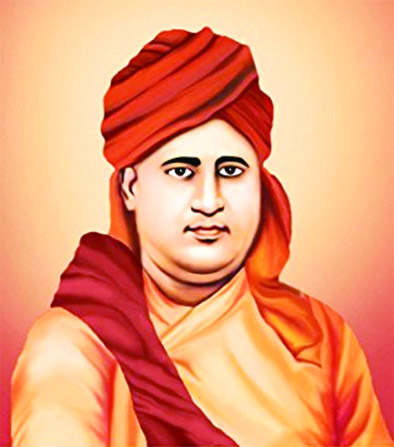
Early Life
- Dayanand Saraswati was born on February 12, 1824 in Tankara, Gujarat as Mool Shankar to Karshanji Lalji Tiwari and Yashodabai.
- He was attracted to the spiritual realm after the death of his sister when he was 14 years old.
- At age 22, Moolshakar left home in search of true knowledge, spiritual purity and moksha (liberation).
- He wandered for fifteen years (1845-60) in search of a guru. In 1860, he found his blind guru and mentor Swami Virjanand Saraswati at Mathura.
- Virjanand Saraswati gave him the name Dayanand and as gurudakshina extracted a promise from Dayanand that he would devote his life to the revival of Hinduism.
Preachings
- To him Veda was the rock-bed of Hindu culture and infallible, being the inspired one of God. He gave the clarion call “Go Back to Vedas”.
- His slogan called for a revival of Vedic knowledge and the purity of Vedic religion, not a return to Vedic times.
- He strongly criticized the Hindu belief in maya (illusion) as the overarching theme of all physical existence.
- He profusely quoted the Vedas and other religious texts to insist that salvation was not the only motto of a Hindu or Arya, as was believed.
- To lead a fruitful worldly life, working for a noble cause was important, and he preached that salvation was possible through social service.
- He opposed Islam and Christianity and advocated for Suddhi movement to reconvert the other sects to the Hindu order.
- He advocated that God, the soul, and matter (prakriti) were separate and eternal entities.
- He was against idol worship, caste system, ritualism, fatalism, infanticide, sale of grooms, child marriages, etc. He also stood for the liberation of women and upliftment of the depressed class.
- He advocated the ideal age for a girl to be between 16 and 24, and for men between 25 and 40.
- He was the first leader in the field of theology who welcomed the advances of sciences and technology.
- He believed in the theory of karma and reincarnation.
- He subscribed to the Vedic notion of chaturvarna system in which a person was identified as a Brahmin, Kshatriya, Vaishya, or Shudra according to the occupation he followed.
Contributions
- Maharshi’s first major authorship was Panchmahayajya Vidhi in 1874 AD.
- He wrote three books namely:
- “Satyartha Prakash”,
- “Veda Bhashya Bhumika” and
- “Veda Bhashya”.
- He founded Arya Samaj in Mumbai in 1875 to promote social service. Later the headquarters of the Samaj were established at Lahore.
- The Paropkarini Sabha located in Ajmer was founded by the Swami himself to publish and preach his works and Vedic texts in 1882.
- He is credited to have first used the term swaraj (self-rule)- “India for Indians” in 1876, which was later picked up by the likes of Lokmanya Tilak and Mahatma Gandhi.
Death and Legacy
- Dayanand Saraswati died under suspicious circumstances in 1883, after his public criticism of the Maharaja of Jodhpur.
- Today, Dayanand Saraswati’s legacy carries on through the Arya Samaj centres found across India as well as the Dayanand Anglo-Vedic schools and colleges.
- The first DAV School was established at Lahore with Mahatma Hansarj as the headmaster.
- Sarvapalli Radhakrishnan, India’s second President, called Dayanand Saraswati “a maker of modern India”.
{GS2 – IR – India-Bangladesh} Indo Bangladesh Protocol (IBP) Route
- Context (PIB): India and Bangladesh are set to initiate the first trial movement of vessels between Maia Port in India and Sultanganj Port in Bangladesh on February 12.
- It is set to take place on Indo Bangladesh Protocol (IBP) Route no. 5 & 6.
- The waterway route from Maia (IBP route) to Dhubri (NW-2) via Aricha will reduce the distance by around 930 kilometers compared to the existing waterway route.
- This development is in line with the Act East Policy.
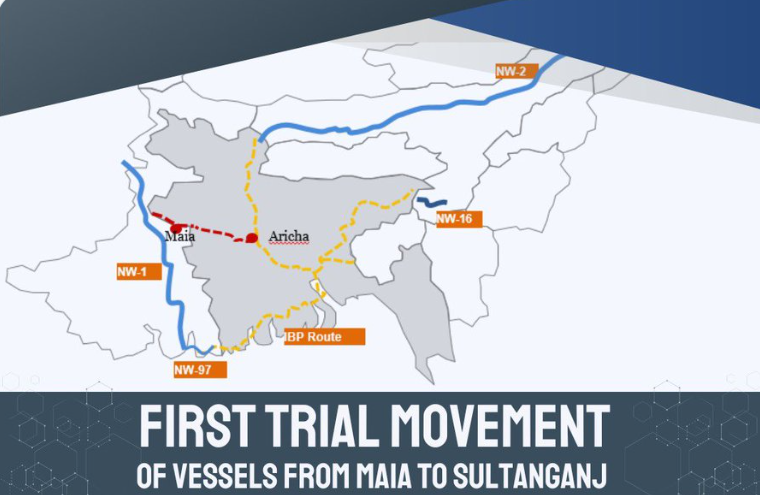
Indo Bangladesh Protocol (IBP) Route
|
{GS2 – IR – India-UAE} India-UAE Relations
- Context (TH): India has numerous strategic partnership agreements across the globe, but none displays more convergence and mutual respect at all levels than the one with the UAE.
- UAE has become India’s strategic partner and one of the most important linchpins of India’s engagement in the Gulf region.
Importance of UAE for India
- Convergence of ideas on global climate issues. Both India and the UAE co-launched the Global Green Credit Initiative.
- Economic Partnership
- Bilateral trade grew to $85 billion in 2022-23.
- UAE is India’s 3rd largest trading partner & 2nd largest export destination.
- It is also the 4th largest overall investor in India.
- The India-UAE Comprehensive Economic Partnership Agreement, signed on February 18, 2022. It aims to increase trade in services to $115 billion in five years.
- The bilateral investment treaty with the UAE was ratified on February 1, 2024. This has the potential to boost manufacturing and attract increased foreign direct investment.
- Co-operation in Fintech: The RuPay card, a key component of India’s Digital Public Infrastructure (DPI), has been accepted in the UAE since August 2019.
- Internationalisation of INR
- From July 2023, the rupee was being accepted for transactions at Dubai’s airports.
- India and the UAE also operationalised a rupee-dirham settlement system.
- In August 2023, the Indian Oil Corporation made a rupee payment to the Abu Dhabi National Oil Company for crude oil imports.
- Energy security
- UAE is the only nation in the region that has strategic oil reserves stored in India.
- An agreement was signed between Indian Strategic Petroleum Reserves Ltd (ISPRL) and the Abu Dhabi National Oil Company to invest in the strategic crude oil storage facility in Mangaluru with an initial investment of $400 million.
- Defence and security cooperation.
- During the OIC Foreign Ministers’ Meeting in 2019, UAE invited India’s External Affairs Minister as a keynote speaker/guest of honour country despite protests from Pakistan.
- The UAE was one of few nations specially invited for the G-20 summit, in September 2023, under India’s G-20 presidency.
- Internationalisation of India’s education
- The IIT Delhi Abu Dhabi campus has been established.
- Global groupings
- The I2U2 or the West Asian Quad comprising India.
- India-Middle East-Europe Economic Corridor (IMEEC) infrastructure project.
{GS2 – MoE – Initiatives} Football for Schools (F4S) Programme
- Context (PIB): The Ministry of Education launched the Football for Schools (F4S) programme for school students in collaboration with the All India Football Federation (AIFF).
- The F4S program is an initiative launched by the Fédération Internationale de Football Association (FIFA) in collaboration with UNESCO.
- Objective: It seeks to make football more accessible to both boys and girls by integrating football activities into the education system in collaboration with relevant authorities and stakeholders.
Fédération Internationale de Football Association (FIFA)
All India Football Federation (AIFF)
|
{GS2 – Polity – IC – Elections} One Nation One Election (ONOE)
- Context (PIB I TH I IE): Industry body Confederation of Indian Industry (CII) said ‘ONOE’ would enhance governance efficiency and economic development.
- CII presented its views on the ONOE to the High-Level Committee.
CII’s Views on ONOE
- Asynchronous multiple elections lead to frequent disruption in policy making and administration, leading to uncertainty about the government’s policies.
- It also affects the working of the Government due to its officials being roped in for election duties.
- Investment decisions by the private sector tend to slowdown prior to the elections.
- It leads to delays in project implementation as the Model Code of Conduct (MCC) gets imposed.
- ONOE will lead to a reduction of expenses incurred by the governments in administering elections.
- CII believes there are two options for doing this
- A single five-year cycle and
- A two-stage simultaneous election with a gap of at least 2.5 years between the Lok Sabha (LS) elections and the Legislative Assemblies (LAs) in the interim period.
Central Idea behind ONOE
- ONOE refers to structuring the Indian election cycle by synchronising the elections to LS and LAs.
- This excludes elections of panchayats, state municipalities and by-elections.
- This means that the voters will cast their vote for electing members of the LS and the LAs on a single day, at the same time (or in a phased manner, as the case may be).
Present Status of Elections in India
- The electoral machinery holds separate polls for the LS and LAs over a gap of five years.
- When the tenure of the LS or the LAs concludes, or either of them is dissolved prematurely.
|
Historical Background
- ONOE were conducted for the LS and the LAs in 1952, 1957, 1962, and 1967.
- The cycle was first broken in 1959 after the GOI invoked Article 356 of the IC to dismiss the then-Kerala government.
- The premature dissolution of some LAs in 1968 and 1969 again disrupted the cycle of simultaneous election cycle.
- Again, in 1970, the LS was dissolved prematurely, and fresh elections were held in 1971.
- As of now, the LS elections coincide with the LAs elections in four States, namely Andhra Pradesh, Odisha, Arunachal Pradesh, and Sikkim.
Need for ONOE
Frequent Elections
- Every year, on average, 5 to 7 State assembly elections are held.
- This affects all the key stakeholders, such as the GOI, State Government, Government employees, teachers on election duty, voters, political parties, and candidates.
Policy Paralysis
- The MCC comes into play just after the elections are announced by the Election Commission (EC).
- 79th report of the parliamentary standing committee: Imposition of MCC leads to the suspension of normal government activities and programs of governments.
- No new policy decisions are made due to the MCC, and critical policy decisions get delayed.
- Implementation of even ongoing projects gets derailed during election periods.
- It also shifts the focus of governance from long-term to short-term policy goals.
Massive expenditures
- Frequent elections lead to massive expenditures for Central and state governments. Hence, it causes a waste of public money and hampers development work.
- According to a report, during the 2019 LS Elections, Rs 60,000 Crores were spent by the authorities, candidates and political parties.
|
Social Harmony
- Constant politics and frequent elections keep caste, communal and regional issues at the forefront.
Arguments in favour of ONOE
Reduction of Financial burden on the state exchequer
- A ‘ONOE’ will reduce ECI’s overall expenditure on the political process.
- ECI has estimated the cost of simultaneous elections to be around Rs.4500 cr.
- The same electoral rolls can be used for all the elections. This will save a tremendous amount of time and money spent on updating electoral rolls.
- According to the NITI Aayog report, the cost of conducting all State and parliamentary elections-
- In a five-year cycle, it is equivalent to Rupee 110 per voter per year.
- When elections are synchronised, it is equivalent to Rupee 115 per voter per year.
|
Better utilisation of financial resources by political parties
- Election expenses of political parties can be reduced drastically if elections are held simultaneously.
- There would be no duplication of fundraising by political parties for LS and LAs elections.
- This will also help smaller regional parties better manage financial resources.
- The monitoring of election expenditure by the ECI will also become more effective.
Continuity in Policy Decisions & Focus on governance
- It will reduce ‘policy paralysis’ that results from the imposition of the MCC during election time.
- ONOE will ensure the continuity of government policies and programmes.
- It will reduce disruption of everyday public life as political rallies will be kept to a minimum.
- It will improve the delivery of essential services to the public.
Increase of administrative efficiency
- Political executives and government officials will not regularly get engaged with election duties and prioritise routine administration.
Reduced Deployment of Security Forces
- A large number of security forces are engaged to ensure that elections are conducted peacefully, and this involves massive redeployment and huge costs.
- Simultaneous elections will curtail the diversion of security forces from their critical functions.
Increase in voter turnout.
- Law Commission: Simultaneous elections will increase voter turnout because it will be easier for people to cast many votes all at once.
Reduced Freebies and Improved State Finances
- ONOE would reduce the populist measures, and the frequency with which governments have to announce freebies will also decrease.
- Frequent elections lead to a situation where many state governments are broke. With less number of elections, their finances could be in better shape.
Curbing Horse-Trading
- Fixed-interval elections have the potential to reduce horse-trading by elected representatives.
- ONOE will make it more challenging for representatives to switch parties for personal gains, complementing existing anti-defection laws.
Arguments against ONOE
Reduced Accountability
- Regular elections compel the government to listen to the people’s will regularly and serve as a feedback mechanism for political parties.
- If the government is assured of a fixed term, it might lead to autocratic tendencies.
- Elections for different levels allow voters to hold their representatives accountable for their specific grievances.
Against the Idea of Federalism
- It will:
- Centralise the power.
- Strengthen the hold of national parties when in office.
- Reduce the importance of regional parties.
|
- An elected CM of a State has the power to recommend the dissolution of their LA and call for early elections.
- Under a ‘ONOE’ framework, state governments will not have the right to do this.
- Elections in some states will have to be postponed to synchronise the elections.
- This can be done through the president’s rule, which isn’t good for democracy and federalism.
Against the Spirit of Democracy
- ONOE tries to force an artificial cycle of elections, restricts the choices of voters, and violates their right to vote.
- Democracy is more about accountability and people’s choices and less about the cycle of elections and other issues.
Influences choices and electoral behaviour
- Voters may vote for the same party at the national and state levels, putting regional parties at a disadvantage.
- According to a research report by IDFC Institute,
- If elections are held simultaneously, there’s a 77 per cent likelihood of voters favouring the same political party for both LAs and the LS.
- This figure drops to 61 per cent if elections are held six months apart.
|
Increase in cost
- In the short term, ONOE will increase the costs of deploying more numbers of EVMs and VVPATs.
- Political parties and candidates may spend a lot more money on elections than the government.
|
Dissolution challenges
- Lok Sabha can be prematurely dissolved on account of a vote of no-confidence.
- Example- Atal Bihari Vajpayee’s government faced dissolution within 13 days of taking power.
- Whether new elections would be required in all states, even if the ruling party holds an absolute majority in those states, is a big question.
‘National constituency phenomenon’
- National parties will be favoured due to their comparative advantage in terms of their claim to serve better ‘national interest’ rather than regional parties focusing on ‘narrow, parochial’ issues.
Challenges in the implementation of ONOE
Constitutional and legal challenges
- Simultaneous elections would require amendments in five articles of the IC-
- Article 83 (relating to the duration of Houses of Parliament),
- Article 85 (relating to dissolution of the Lok Sabha by the President),
- Article 172 (relating to the duration of the state legislatures),
- Article 174 (relating to the dissolution of the state legislatures) and
- Article 356 (relating to the imposition of the President’s Rule in states).
- This requires constitutional amendments with ratification from 50% of states.
Syncing the terms of various LAs with LS
- The terms of different LAs end on separate dates and years.
- Curtailment and extension of LAs duration are significant challenges to holding simultaneous elections.
Judicial Review Challenge
- The premature dissolution of LA to ensure simultaneous election would attract judicial review.
- The Use of the President’s rule to dissolve the LAs has been held by the SC to be a part of the judicial review in the S.R. Bommai (1994) and the Rameswar Prasad (2006).
Local Body Election Challenge
- All the LAs have passed separate acts for local bodies, fixing the tenure of these bodies as five years, as per Article 243(E) and 243 (U), respectively.
|
Logistical challenge
- There are significant logistical challenges in the implementation of simultaneous election:
- Arranging around 30 lakh EVMs and Voter-verified paper audit trail (VVPAT) machines and
- Deploying central forces around the country.
Recommendations of various Committees
- The ECI, 1983: A system should be evolved so that elections to LS and LAs could be held simultaneously.
- The Law Commission -170th Report, 1999): We must go back to the past when the elections to LS and all the LAs were held simultaneously.
- The Parliamentary Standing Committee 79th report, 2015, and NITI Aayog paper, 2017, also favoured the idea of ONOE.
Law Commission Draft Report on Simultaneous Elections, 2018
Conduct of Simultaneous Elections
- Simultaneous elections cannot be held within the existing framework of the IC.
- ONOE may be conducted through appropriate amendments to
- The Constitution,
- The Representation of the People Act 1951, and
- The Rules of Procedure of LS and LAs.
- At least 50% of the states should ratify the constitutional amendments.
No-confidence Motion
- Replacing the ‘no-confidence motion’ with a ‘constructive vote of no-confidence’.
- Limiting the number of such motions during the term of the House/ Assembly.
|
Hung House/ Assembly
- To prevent the situation of Hung House, the President/ Governor should give the most significant party an opportunity, along with their pre- or post-poll alliance, to form the government.
- If the government can still not be formed, an all-party meeting may be called to resolve the stalemate. If this fails, mid-term elections may be held.
- Appropriate amendments be made to provide that any new LS/LA formed after mid-term elections will be constituted only for the remainder of the previous term and not the entire five years.
Amendment to anti-defection laws
- Appropriate amendments be made to anti-defection laws to ensure that the presiding officer decides all disqualification issues within six months.
Framework for synchronisation of elections
- The Commission recommended three alternatives to conduct simultaneous elections in 2024-
Option 1
- Advancing or postponing election timings in certain states such that elections to all LAs and LS may be held together.
- It recommended the following changes to the election timings of other LAs:
- Assembly elections due before LS elections, 2019: The term of these assemblies may be extended to synchronise it with LS elections by amending the IC.
- Assembly elections due immediately after LS elections: With political consensus, elections can be held with LS elections if the states voluntarily dissolve their LAs, earlier or by law.
- Assembly elections in remaining states: For the remaining states and UTs, elections may be conducted towards the end of 2021. The term of these LAs will be 30 months or till June 2024, whichever is earlier.
- This will require a constitutional amendment since the terms of different assemblies will either need to be curtailed or extended.
Option 2
- If LAs elections are held in 2019 and 2021, then elections will be conducted twice in five years.
Option 3
- If simultaneous elections cannot be conducted, then all elections falling in a calendar year should be conducted together.
- The timing of such an election should be conducive to all LAs involved and the LS (if dissolved earlier).
- This will also require amendments to the IC and the RPA, 1951.
High-level committee to examine ONOE
- GOI has formed an eight-member committee to examine the possibility of an ONOE.
- Former President Ram Nath Kovind has been appointed as Chairman of the committee.
- The linguistic bias in consultations is a concern as the committee’s website is available only in English and Hindi.
Mandate of the Committee
- Examine the logistics and workforce required, including EVMs and VVPATs.
- Suggest a framework for the synchronisation of elections and the phases and time frame within which simultaneous elections may be held.
- To examine and recommend if the amendments to the IC would require ratification by the States.
Simultaneous Elections- International Practices
- South Africa: Elections to national as well as provincial legislatures are held simultaneously for five years, and municipal elections are held two years later.
- Sweden: Elections to the national legislature, provincial legislature and local bodies are held on a fixed date, i.e., the second Sunday in September every fourth year.
- Britain: the Fixed-term Parliaments Act of 2011 was passed to provide a sense of stability and predictability to the British Parliament and its tenure.
- It provided that the first elections would be held on the 7th of May, 2015 and on the first Thursday of May every fifth year after that.
- But in its very second cycle, the House of Commons overrode this law and elections were held in 2017.
- The Fixed Term Parliaments Act was repealed in 2022, and the Dissolution and Calling of Parliament Act 2022 revived the power of the PM to request the monarch to dissolve Parliament.
- Canada: There is no restriction on the dissolution of legislatures prior to the fixed date; all the provinces have their calendar, and the federal parliament has its own.
- Germany: To overcome its pre-WW II history of parliamentary instability, Germany’s fundamental law does not allow votes of no-confidence without naming a successor.
- However, voting for state legislatures is as per the laws of the concerned state, and they follow their election cycle.
{GS3 – Envi – Conservation} Kerala’s Environment Budget
- Context (TH): For the first time, the Kerala government has introduced an Environment Budget as a distinct document alongside the State Budget.
- The sectors selected for the first Environment Budget are agriculture, livestock, fisheries, forests and wildlife, environment, water resources, cooperation, soil survey, and the energy sector.
{GS3 – IE – Banking} UPI & Rupay Cards
- Context (PIB): PM launched the UPI services in Sri Lanka and Mauritius, and also RuPay card services in Mauritius, on 12 February via video conferencing.
- India has emerged as a leader in Fintech innovation and Digital Public Infrastructure.
- The launch will enable the availability of UPI settlement services for Indian nationals travelling to Sri Lanka and Mauritius as well as for Mauritian nationals travelling to India.
- The extension of RuPay card services in Mauritius will enable Mauritian banks to issue cards based on the RuPay mechanism in Mauritius and facilitate usage of RuPay Card for settlements both in India and Mauritius.
Unified Payments Interface (UPI)
Rupay cards
|
{GS3 – S&T – Tech} High Altitude Pseudo-Satellite
- Context (TH | DH): Scientists at the CSIR-National Aerospace Laboratories (NAL) have successfully tested a UAV called High Altitude Pseudo-Satellite (HAPS) at Challakere, Karnataka.
- The trial version was a subscale model with a wingspan of 12 metres. It flew for eight and a half hours at an altitude of 3 km above the mean sea level.
- Whereas the full-scale model
- will have a wingspan of around 30 metres and a weight of 150 kg.
- It will be a slow-moving aircraft with a speed of 80-100 km per hour.
- It will be able to fly for 90 days at an altitude of 17-20 km.
- The payload carrying capacity will be 15 kg.
- Several nations and companies are currently working on a commercial HASP, but there is barely any product in the market yet.
About High Altitude Pseudo-Satellite (HAPS)
- They are named pseudo-satellites because they perform basic satellite functions, but they do not require a rocket for launching.
- E.g. they can observe the ground from high altitudes, achieving this at a much lower cost.
- HAPs are like drones, except that they are expected to be in the stratosphere, well above where commercial planes fly.
- Flexibility over satellites: They can be easily moved to a location of choice, unlike a satellite, which has a fixed predetermined path.
- They are powered by solar cells and can fly continuously in the atmosphere for days.
Applications
- Military: intelligence, surveillance, & reconnaissance (exploratory military survey of enemy territory).
- Civilian: Can be used as a telecom satellite in times of environmental disasters, for beaming 5G waves and land mapping.
Challenges
- Overcoming climatic factors like jet-stream in northern parts of the country as well as monsoon clouds since HAPS are placed in the Stratosphere.
- Solar films used to power the plane are extremely thin. There are only one or two companies in the world capable of making solar-cell films that thin.
{Prelims – In News) SWATI Portal
- Context (PIB): The Science for Women-A Technology & Innovation (SWATI) Portal was recently launched in New Delhi.
- The portal was officially launched on February 11, 2024, coinciding with the International Day of Women and Girls in Science at the Indian National Science Academy (INSA).
- It is developed by the National Institute of Plant Genome Research (NIPGR).
- Objective: To showcase and celebrate the contributions of Indian women scientists while promoting inclusivity and opportunities in STEMM ((Science, Technology, Engineering, Mathematics, and Medicine).
- Unique Features: It provides a platform for knowledge dissemination, highlights advances in fundamental science, and emphasizes the importance of innovation and entrepreneurship.
Other initiatives
|
{Prelims – In News} Nazool Land
- Context (IE): Violence erupted in Uttarakhand’s Haldwani district after the administration conducted a demolition drive at the site of a mosque and madrasa, allegedly on Nazool land.
What is Nazool Land?
- Nazul land refers to government-owned land leased out for various purposes, including non-agricultural uses.
- The state generally allots such land to any entity on lease for a fixed period, generally between 15 and 99 years.
- In case the lease term is expiring, one can approach the authority to renew the lease by submitting a written application to the Revenue Department of the local development authority.
- The government is free to either renew the lease or cancel it — taking back Nazool land.
How did Nazool land emerge?
- During British rule, kings and kingdoms that opposed the British frequently revolted against them, leading to several battles between them and the British Army.
- Upon defeating these kings in battle, the British would often take their land away from them.
- After India gained Independence, the British vacated these lands.
- But with kings and royals often lacking proper documentation to prove prior ownership, these lands were marked as Nazool land — to be owned by the respective state governments.
How does the government use Nazool land?
- The government generally uses Nazool land for public purposes like building schools, hospitals, Gram Panchayat buildings, etc.
How is Nazool land governed?
- While several states have brought in government orders for the purpose of framing rules for Nazool land, The Nazool Lands (Transfer) Rules, 1956 is the law mostly used for Nazool land adjudication.
Is the Halwani land where the demolition drive took place registered as Nazool land?
- As per the Haldwani district administration, the property where the two structures (mosque and madrasa) are situated is registered as Nagar Nigam’s (Municipal Council’s) Nazool land.
- The administration says that a demolition drive has been underway in connection with Nagar Nigam properties to free roads from traffic congestion.
{Prelims – PIN World – Middle East} Rafah Crossing
- Context (IE): The Israeli government has announced its plans to invade Rafah.
- Arab countries and Palestinians suspect Israel might use this opportunity to force demographic changes to wreck Palestinian demands for statehood in Gaza, the West Bank, and east Jerusalem.
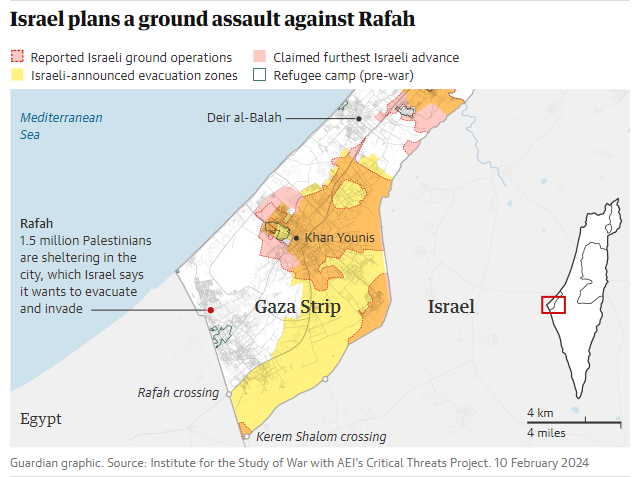
- Rafah Crossing is a border crossing between the southern end of the Gaza Strip and Egypt.
- It is the only land entry point to Gaza not controlled by Israel.
- Israel & Egypt have imposed restrictions on the movement of people and goods to and from Gaza.
Significance of Rafah
- According to the United Nations, more than 1.4 million people are currently in Rafah, which was once a city of 300,000 people prior to the Hamas attack.
- Rafah is located close to Egypt and has a border crossing that helps supply food and fuel to Gaza.
{Prelims – Sci – Bio – Diseases} Lymphatic Filariasis
- Context (PIB): The Ministry of Health and Family Welfare has launched the bi-annual Nationwide Mass Drug Administration (MDA) campaign to eliminate Lymphatic Filariasis.
- The campaign aims to curb disease transmission by providing free preventive medications to residents in areas affected by the disease twice a year.
- India aims to end Lymphatic Filariasis by 2027, three years ahead of the global target.
Lymphatic Filariasis
- Commonly known as elephantiasis, it is a neglected tropical disease.
- Cause: Infection with filarial parasites (nematodes) (Wuchereria bancrofti (90% of cases), Brugia malayi (most remaining cases), Brugia timori).
- These worms affect the lymphatic system, leading to pain, disability, and social stigma.
- Transmission: Mosquitoes transmit mature larvae to humans through bites.
- Symptoms: Lymphedema (Swelling due to lymphatic dysfunction), elephantiasis (swelling of body parts (e.g., legs, arms, breasts, genitals)).
- Preventive Measures and Treatment: Chemotherapy with safe medicine combinations.
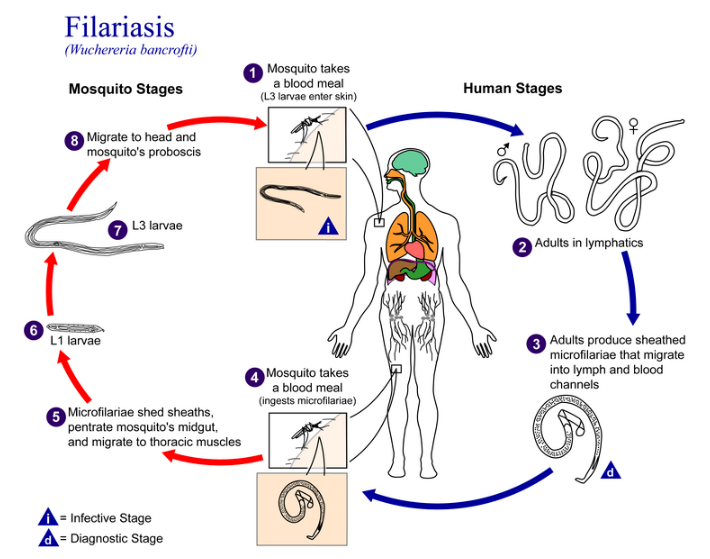
|




![PMF IAS Environment for UPSC 2022-23 [paperback] PMF IAS [Nov 30, 2021]…](https://pmfias.b-cdn.net/wp-content/uploads/2024/04/pmfiasenvironmentforupsc2022-23paperbackpmfiasnov302021.jpg)
